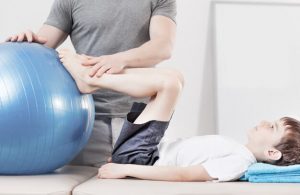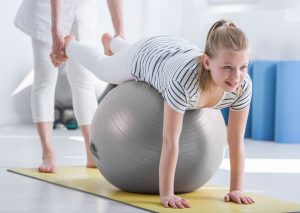Pediatric Physical Therapy for Urinary Incontinence
Does Your Child Leak Urine When They Laugh, Cough or Exercise?
Does Your Child Hold Their Urine While at School Causing Issues With Voiding?

Just as in adults, children can experience urinary incontinence and pelvic floor dysfunction. Pelvic floor dysfunction refers to a wide range of problems that occur when the pelvic floor muscles are weak or in spasm. When the pelvic floor muscles are not working together with the bladder, normal bladder emptying reflexes can be disrupted. This can lead to incontinence issues and even an abnormal pattern of elimination that does not allow the bladder to empty completely.
As a result, some children may experience difficulty urinating or controlling their bladder function, urinary tract and bladder infections, urine leakage or “giggle” incontinence, as well as daytime wetting and bed wetting issues. Pelvic floor dysfunction resulting in wetting not only affects a child’s quality of life and self-esteem, but can also be a medical condition that should be evaluated by a pediatrician or pediatric urologist.
Physical Therapy Can Help With Issues Such As:
- Urinary incontinence or “giggle” incontinence (urine leakage including leakage when a child laughs caused by weak pelvic floor muscles)
- Urinary urgency (constant/strong need to urinate)
- Urinary frequency (urinating more than eight times in a 24 hour period)
- Urinary retention (not fully emptying the bladder)
- Bedwetting
- Constipation
How Physical Therapy Works for Treating Urinary Incontinence in Children

If your pediatrician or pediatric urologist refers your child to a physical therapist, rest assured that Chesapeake Urology works with the most experienced therapists for pelvic floor dysfunction in children. A physical therapist will meet with you and your child to obtain a thorough history of your child’s issue. A physical exam is then performed with the parent present to look at the muscles of the abdomen, legs, and back. Your therapist may also look at the child’s diet, sleep patterns, exercise and assess any behavioral issues that may be contributing to the problem. The physical therapist will consult with your child’s referring physician to develop a personalized treatment plan.
What Physical Therapists Do
Treatment is one-on-one and is focused on being fun as well as educational for your child.
Physical therapists use animated biofeedback and computer programs with animated images to get children to activate and relax pelvic floor muscles. Utilizing this fun method, children don’t even realize they are “working” and strengthening their pelvic floor muscles.
Treatments Include:
- Biofeedback-surface electromyography (external electrodes or “stickers”)
- Behavioral and diet modifications
- Hot and cold therapy
- Stretching and strengthening of pelvic floor and surrounding muscles, as appropriate
- Relaxation techniques
- Bladder retraining
- Pelvic floor muscle re-education
- Soft tissue mobilization
Research has shown that proper pelvic floor muscle training and biofeedback drastically improves voiding dysfunction such as urinary incontinence in children.
To learn more about physical therapy and if your child is a good candidate, please contact a member of the Chesapeake Urology for Children health care team.
